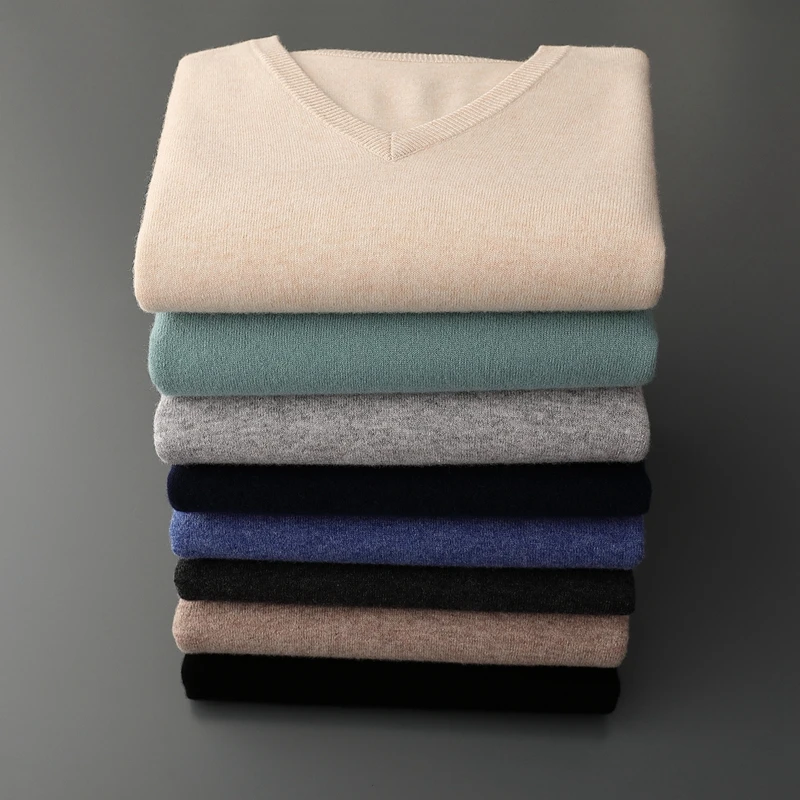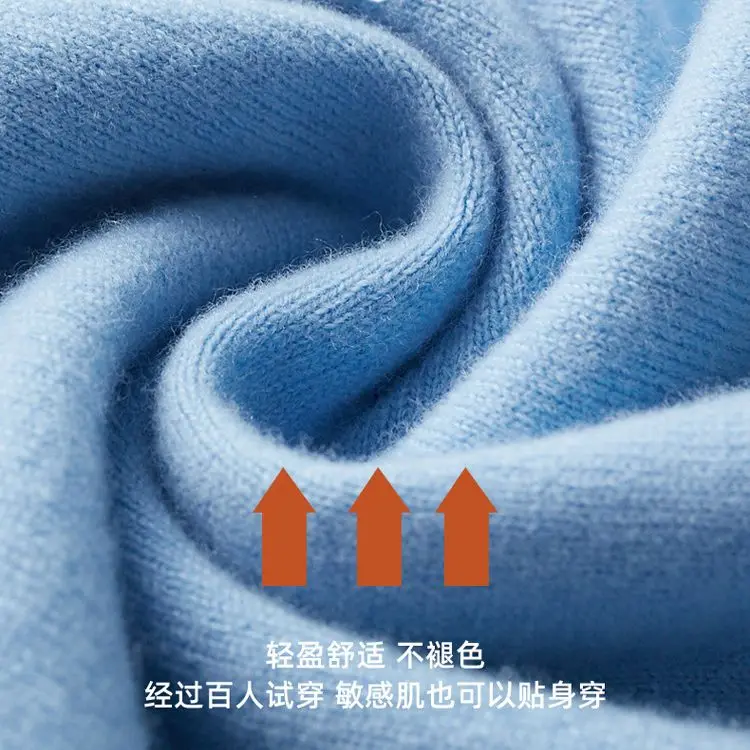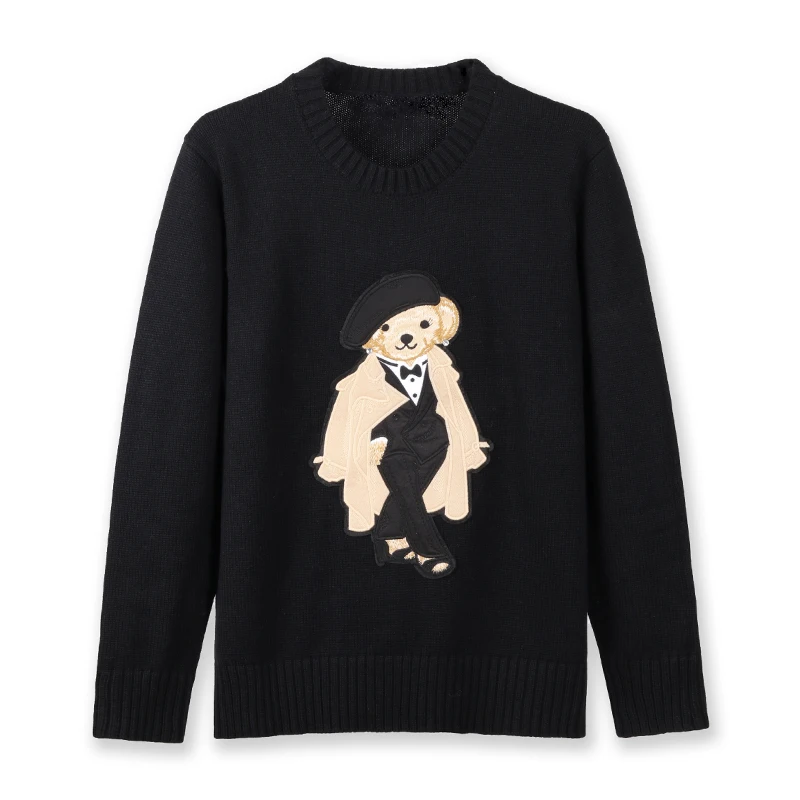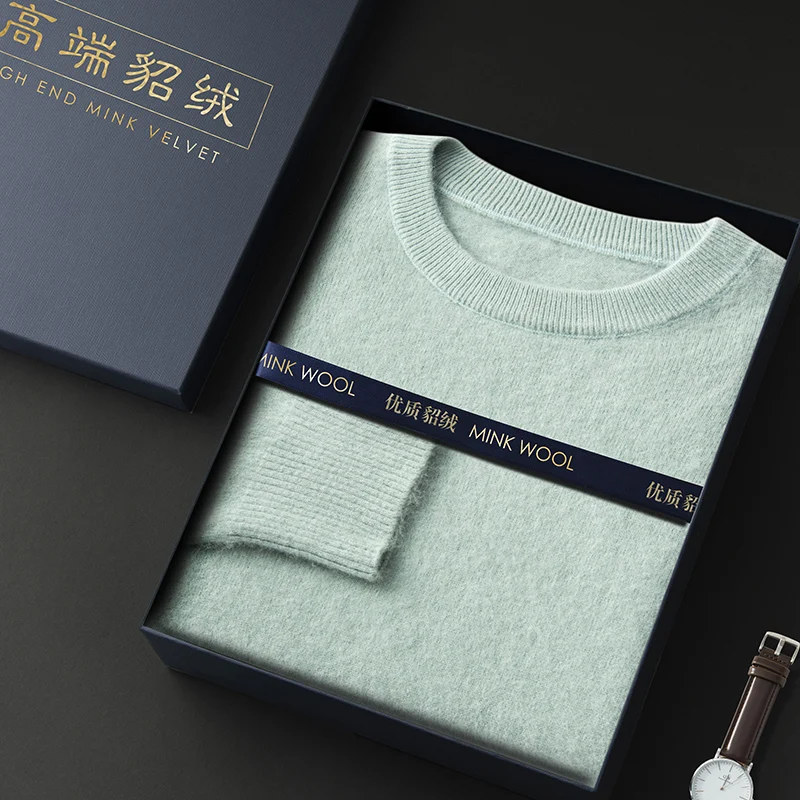1. Understanding Why Cashmere Quality Matters
Cashmere stands apart from ordinary wool thanks to its exceptional softness, lightweight nature, and remarkable insulating properties. Unlike regular sheep’s wool, genuine cashmere comes from the soft undercoat of cashmere goats, making it a true luxury fiber with unparalleled comfort and performance.
Not all cashmere is created equal. The market contains dramatic quality variations that directly impact how your garment will look, feel, and perform over time. What might seem like a bargain can quickly disappoint, while investment pieces can become treasured wardrobe staples for decades.
Many shoppers mistakenly believe all cashmere items offer similar quality simply because they share the cashmere name. This misconception leads to disappointment when lower-quality pieces pill excessively, lose shape, or feel scratchy after minimal wear.
Quality cashmere represents a true investment in your wardrobe:
- Temperature regulation that outperforms regular wool (8 times warmer while remaining significantly lighter)
- Exceptional softness that improves with proper care
- Durability that allows garments to last 10+ years when properly maintained
- Natural breathability and moisture-wicking properties
The price gap between low and high-quality cashmere is substantial—comparable items might range from $50 to $500+, reflecting genuine differences in fiber quality, processing, and construction that styling tips for cashmere cardigans can help you showcase.
2. The Science of Premium Cashmere Fibers
Understanding the technical aspects of cashmere quality empowers you to make informed decisions. Four primary indicators determine cashmere excellence: fiber fineness, length, crimp, and purity.
Fiber Fineness (Diameter)
Measured in microns (μm), fiber diameter is the most crucial factor determining softness. Premium cashmere fibers measure between 14-15.5 microns, while lower quality ranges from 18-19+ microns. For context, human hair averages about 75 microns—roughly five times thicker than quality cashmere. The finer the fiber, the softer the feel against skin.
Fiber Length
Long fibers create stronger yarns that resist pilling and maintain shape. Premium cashmere contains fibers 34-42mm long, while inferior grades use shorter fibers (15-20mm) that quickly work loose, causing excessive pilling and shedding.
Fiber Crimp
Natural waviness or crimp in cashmere fibers creates air pockets that provide exceptional insulation. Higher-quality cashmere displays consistent, defined crimp patterns that enhance warmth without adding weight.
Purity
True premium cashmere comes from the soft undercoat of the cashmere goat, carefully separated from coarser guard hairs. Lower-quality processing fails to remove all guard hairs, resulting in scratchy fibers mixed with the soft ones.
| Quality Indicator | Premium Cashmere | Standard Cashmere | Low-Quality Cashmere |
|---|---|---|---|
| Fiber Diameter | 14-15.5 microns | 16-17.5 microns | 18-19+ microns |
| Fiber Length | 34-42mm | 28-33mm | 15-20mm |
| Crimp | Pronounced, consistent | Moderate | Minimal or inconsistent |
| Purity | 99%+ dehaired | 95-98% dehaired | <95% dehaired |
Our brushed cashmere sweater collection exemplifies these premium fiber characteristics, carefully selected for ultimate softness and durability.
3. Cashmere Grading System Explained
The cashmere industry uses a standardized grading system to classify fiber quality, though implementation varies between manufacturers. Understanding these grades helps you interpret product descriptions and assess value.
Grade A Cashmere
* Fiber diameter under 16 microns
* Minimum fiber length of 36mm
* Exceptionally soft with excellent durability
* Minimal pilling even with regular wear
* Represents about 20% of global cashmere production
Grade B Cashmere
* Fiber diameter between 16-19 microns
* Fiber length between 28-34mm
* Good softness but less durability than Grade A
* Moderate pilling with regular wear
* Represents about 60-70% of global cashmere production
Grade C Cashmere
* Fiber diameter 19+ microns
* Shorter fiber lengths (under 28mm)
* Noticeably less soft with potential scratchiness
* Significant pilling and shape loss over time
* Represents about 10-20% of global cashmere production
The price difference between grades is substantial—generally 30-40% between each grade level. While Grade A commands premium prices, its superior performance and longevity often make it the better long-term value.
Be aware that some brands use their own grading terminology or make unsubstantiated quality claims. The most reliable indicators are the specific fiber measurements rather than marketing terms alone. The world’s best quality cashmere comes from specific regions known for superior environmental conditions.
4. The Hand-Feel Test: Using Your Senses to Identify Quality
Your sense of touch provides valuable insights when evaluating cashmere quality. Here’s how to conduct an effective hand-feel assessment:
Use your entire hand: Gently run your palm and fingers across the fabric surface. High-quality cashmere feels buttery soft yet has a subtle resilience—not limp or lifeless.
Test sensitive skin areas: Hold the fabric against your neck or inner wrist. Premium cashmere feels consistently soft without any prickly sensation, indicating the absence of coarser guard hairs.
Notice the weight-to-warmth ratio: Quality cashmere feels lightweight yet substantial, with a natural loft that suggests warmth without bulk.
Be wary of extreme silkiness: Cashmere that feels unnaturally slippery or silk-like may have been chemically treated to mask lower quality. Natural cashmere has a distinctive soft feel with subtle texture.
Check for springiness: Gently compress the fabric between your fingers. Premium cashmere should bounce back rather than remain flat.
When comparing pieces, high-quality cashmere exhibits:
* A plush, substantial feel with gentle resistance when touched
* Consistent softness throughout the garment
* Natural warmth that transfers to your skin immediately
* A subtle, clean scent without chemical overtones
Lower-quality cashmere often feels:
* Slippery or artificially smooth
* Flat or limp with little resilience
* Inconsistent with occasional scratchy patches
* Overly lightweight with little warmth retention
Our authentic cashmere tactile guide provides additional insights for developing your sensitivity to quality differences, which you can experience firsthand with our men’s cashmere pullover collection.

5. Visual Inspection Techniques for Cashmere Quality
Your eyes can reveal much about cashmere quality before you even touch a garment. Develop these visual assessment skills to identify premium pieces:
Knit Density and Evenness
* High-quality cashmere displays consistent, even stitching with uniform tension
* Look for tight, compact knitting with minimal gaps between stitches
* Premium pieces maintain even thickness throughout the garment
* Examine seams for precision alignment and clean finishing
Yarn Characteristics
* Quality cashmere yarn appears smooth with a subtle, natural luster—never shiny
* Look for minimal initial fuzziness (excessive surface fuzz indicates shorter fibers)
* Premium cashmere has a clean, defined appearance rather than a fuzzy halo
* Two-ply or higher construction is visible in quality knits
Light Test
* Hold the garment up to natural light
* Quality cashmere appears dense with minimal light passing through
* Check for consistent density throughout (no thin spots)
* Look for an even color distribution without mottling
Color Assessment
* Premium cashmere accepts dye beautifully, showing rich, consistent color
* Natural (undyed) cashmere shows subtle color variations
* Examine color evenness across seams and panels
* Be wary of unnaturally bright colors in lower-priced pieces
These visual indicators align with what you’ll discover through judging cashmere quality by touch, providing a comprehensive assessment approach.
6. The Stretch and Recovery Test
How a cashmere garment responds to stretching reveals much about its quality and longevity. This simple test helps predict how well the piece will maintain its shape over time.
How to Perform the Test:
- Gently pull the fabric in different directions, stretching about 1-2 inches
- Release and observe how quickly and completely it returns to its original shape
- Pay particular attention to high-stress areas like cuffs, collar, and waistbands
- Repeat the test in multiple areas to ensure consistent performance
Quality Indicators:
* Premium cashmere recovers immediately with minimal distortion
* The fabric returns to its original dimensions completely
* No visible stress lines remain after stretching
* Consistent recovery across different areas of the garment
Warning Signs:
* Slow recovery or permanent stretching
* Visible stress lines that don’t disappear
* Uneven recovery in different sections
* Dramatic stretching with minimal tension applied
This elasticity and recovery directly relates to the fiber length and quality of construction. Longer fibers create stronger yarns that maintain their resilience through repeated wearing. Our cashmere turtleneck collection demonstrates excellent recovery properties that maintain shape wear after wear.
7. Understanding Fabric Weight and Construction
The weight and construction of cashmere fabric significantly impact its performance, appropriate uses, and value. Understanding these technical aspects helps you choose pieces suited to your specific needs.
Fabric Weight (GSM – Grams per Square Meter)
| Weight Category | GSM Range | Best Uses |
|---|---|---|
| Lightweight | 150-200 GSM | Layering pieces, spring/fall wear, indoor use |
| Medium weight | 200-300 GSM | Versatile year-round wear, standalone pieces |
| Heavyweight | 300+ GSM | Maximum warmth, winter wear, outerwear |
Ply Count
Ply refers to the number of yarn strands twisted together to create the final thread:
- Single-ply (1-ply): Lighter, often softer initially but less durable
- Two-ply (2-ply): The standard for quality cashmere, balancing softness and durability
- Four-ply (4-ply): Heavyweight, extremely warm and durable, often used for outerwear
Gauge (Knitting Density)
Gauge describes the tightness of the knit:
- Fine gauge: Thinner, more draping fabric with elegant appearance
- Medium gauge: Versatile everyday weight with good drape and warmth
- Heavy gauge: Substantial fabric with maximum warmth and structure
Quality cashmere maintains appropriate tension and density regardless of gauge. Looser knits should still exhibit resilience and shape retention rather than limpness. For more specialized information, explore our guide on choosing the right cashmere yarn weight.
8. Decoding Cashmere Product Labels
Product labels provide crucial information about cashmere quality—if you know how to interpret them. Here’s what to look for and what to question:
Quality Indicators on Labels:
* Fiber content percentage (should state “100% cashmere” for pure products)
* Ply information (2-ply typically indicates better quality)
* Grade designation (Grade A, B, or C)
* Origin information for both fiber and manufacturing
* Specific care instructions tailored to cashmere
Red Flag Terminology:
* “Cashmere feel” or “Cashmere touch” (indicates synthetic blends)
* “Treated cashmere” (often chemically softened lower-quality fiber)
* “Cashmere blend” without percentage breakdown
* Generic care instructions not specific to cashmere
* Missing grade information when price suggests premium quality
Blend Clarification:
A genuine cashmere blend must specify the exact percentage of cashmere (e.g., “70% cashmere, 30% wool”). Be particularly cautious with products labeled “cashmere blend” without percentages, as they may contain minimal actual cashmere.
Care Label Insights:
Quality cashmere typically comes with specific care instructions recommending gentle hand washing with specialized detergent. Labels suggesting regular machine washing may indicate lower-quality cashmere that has been treated heavily or contains minimal actual cashmere.
All women’s cashmere pullovers from Estate Cloth feature transparent quality labeling with complete fiber information.
9. The Relationship Between Price and Quality
Understanding the relationship between cashmere pricing and quality helps set realistic expectations and identify true value. While price doesn’t always guarantee quality, there are logical reasons why premium cashmere commands higher prices.
Entry-Level Price Range ($50-150):
* Warning signs: Extremely fine, silky feel may indicate chemical treatment
* Likely includes shorter fibers with greater pilling potential
* Often uses Grade C cashmere with thicker fibers
* May be blended with other fibers to reduce cost
* Typically single-ply construction
Mid-Range Price ($150-350):
* Generally includes Grade B cashmere with moderate quality
* Blend of different fiber lengths and diameters
* Usually 2-ply construction for better durability
* Moderate pilling resistance
* Better finishing and construction details
Premium Price Range ($350+):
* Predominantly Grade A cashmere with finest fibers
* Longer fibers for superior pilling resistance
* 2-ply or higher construction for longevity
* Superior finishing details and construction
* Often includes certifications of origin or quality
Production factors that influence pricing include ethical sourcing practices, careful fiber sorting, skilled manufacturing, quality control standards, and sustainable business practices. When evaluating cost, consider the cost-per-wear calculation—premium pieces that last 10+ years often prove more economical than cheaper alternatives needing frequent replacement.
For more perspective on value over time, see our analysis of whether cashmere cardigans are worth the investment.
10. Geographic Origin and Its Impact on Cashmere Quality
The geography and climate where cashmere goats live directly influence fiber characteristics. Understanding regional differences helps evaluate quality claims and origin statements.
Inner Asian Plateau Region:
* Harsh climate produces the finest, longest fibers (protection against extreme cold)
* High altitude areas yield exceptionally soft undercoat
* Traditional herding practices often support sustainable harvesting
* Limited supply contributes to higher prices for authentic material
Regional Characteristics:
* Inner Mongolian cashmere: Renowned for exceptional fineness and length
* Afghan cashmere: Often features slightly higher micron count but excellent durability
* Iranian cashmere: Known for distinctive softness and luster
* Other regions: Quality varies based on altitude, climate, and breeding practices
Processing Centers:
While the fiber origin impacts quality, where the cashmere is processed also matters:
* Scottish mills: Known for traditional techniques and consistent quality
* Italian producers: Renowned for innovative finishes and dyeing expertise
* Japanese processors: Respected for precision and technological advances
Climate conditions directly influence fiber development—colder regions typically produce finer, longer fibers as the animals adapt to harsh conditions. Our detailed guide on premium cashmere geographic origins explores these regional differences in depth.

11. Common Treatments That Disguise Cashmere Quality
Manufacturers sometimes use treatments to enhance the feel of lower-quality cashmere, creating temporary impressions of luxury that don’t withstand time and wear. Recognizing these treatments helps you avoid misguided purchases.
Silicone-Based Softeners:
* Create an artificially slippery, silky hand-feel
* Wash out within the first few cleanings
* Leave garment feeling dramatically different after washing
* Often create an unnaturally smooth surface texture
Chemical Processing:
* Strips natural lanolin and protective oils from fibers
* Creates initial softness but weakens fiber structure
* Results in faster degradation and excessive pilling
* May cause unexpected shrinkage after first cleaning
Mechanical Treatments:
* Excessive brushing creates artificial softness
* Raises short fibers to surface, accelerating pilling
* Damages fiber structure, reducing longevity
* Creates unnatural fluffiness that quickly flattens
How to Identify Treated Cashmere:
* Unnaturally slick or silky surface texture
* Overpowering softness without resilience
* Synthetic-feeling finish rather than natural softness
* Dramatic change after first washing
Products like our cashmere cardigans feature untreated, natural cashmere that maintains consistent properties throughout their lifetime.
12. Is Pilling Always a Sign of Poor Quality?
One of the most common misconceptions about cashmere is that pilling automatically indicates poor quality. Understanding the natural behavior of this fiber helps set appropriate expectations.
Why Does Cashmere Pill?
All cashmere pills to some degree—it’s a natural characteristic of the fiber. During wear, shorter fibers work loose from the yarn twist and form small balls or “pills” on the surface.
Quality Differences in Pilling:
* Premium cashmere: Minimal initial pilling that decreases after first few wears
* Average cashmere: Moderate pilling that continues at a steady rate
* Poor-quality cashmere: Immediate, excessive pilling that continues indefinitely
Assessing Pilling Potential Before Purchase:
* Gently rub fabric between fingers or against itself
* Observe if fibers immediately begin forming pills
* Check high-friction areas (underarms, sides) on display models
* Ask about the fiber length, which directly correlates with pilling resistance
Managing Expectations:
While even the finest cashmere will develop some pills, premium pieces will stabilize after initial wearing periods as loose fibers are removed. Regular maintenance with a cashmere comb or stone keeps garments looking fresh.
For styling approaches that minimize pilling, see our guide to 15 stylish ways to wear cashmere cardigans.
13. Care Practices That Preserve Cashmere Quality
Proper care dramatically extends the life and appearance of your cashmere investments. Follow these guidelines to maintain softness, shape, and beauty through years of wear.
Washing Techniques for Premium Cashmere:
1. Use lukewarm water with specialized wool wash or mild shampoo
2. Gently squeeze suds through fabric—never rub, wring, or twist
3. Rinse thoroughly in same-temperature water until clear
4. Press out excess water between clean towels—never squeeze or wring
5. Reshape while damp and dry flat away from direct heat or sunlight
Optimal Storage Practices:
* Clean before storing—food particles and perfumes attract moths
* Fold rather than hang to preserve shape
* Store in breathable cotton bags or pillowcases, never plastic
* Use cedar blocks or lavender sachets as natural moth deterrents
* Ensure complete dryness before storing for extended periods
Common Care Mistakes:
* Using regular detergent (too harsh for fine fibers)
* Machine washing or drying (causes shrinkage and fiber damage)
* Hanging wet cashmere (stretches out of shape)
* Using direct heat for drying (causes shrinkage and hardening)
* Storing without cleaning (attracts moths and sets stains)
Restoration Techniques:
* De-pill carefully with a cashmere comb or fabric shaver
* Refresh with steam rather than frequent washing
* Use fabric conditioner specifically formulated for cashmere
* Address small holes immediately with matching yarn
For specialized information on maintaining your investment pieces, explore our guide to delicate cashmere drying techniques.

Cashmere Wrap Sweaters, Women's Cashmere Pullovers
$75.89 Select options This product has multiple variants. The options may be chosen on the product pageCashmere Cable Knit Sweaters, Women's Cashmere Pullovers
Price range: $111.82 through $112.93 Select options This product has multiple variants. The options may be chosen on the product pageCropped Cashmere Sweaters, Women's Cashmere Pullovers
$155.77 Select options This product has multiple variants. The options may be chosen on the product page- Price range: $102.02 through $109.37 Select options This product has multiple variants. The options may be chosen on the product page
Oversized Cashmere Sweaters, Plus Size Cashmere Sweaters, Women's V-Neck Cashmere Sweaters
$136.87 Select options This product has multiple variants. The options may be chosen on the product page- Price range: $108.11 through $130.03 Select options This product has multiple variants. The options may be chosen on the product page
14. Questions to Ask Before Purchasing Cashmere
Arm yourself with these key questions when shopping for cashmere to ensure transparency and quality:
“What grade of cashmere is this product?”
Look for specific answers (Grade A, B, or C) rather than vague assurances of “the finest quality.”“What is the average micron count of the fibers?”
Quality pieces will have specific measurements available—under 16 microns indicates premium quality.“Where were the fibers sourced from?”
Reputable sellers know their supply chain and can provide origin information.“How was the garment constructed? Is it 2-ply?”
Construction details reveal much about expected performance and longevity.“What is the average fiber length used?”
Longer fibers (35mm+) indicate better quality and pilling resistance.“Has the cashmere been treated with softeners?”
Honest sellers will disclose any treatments applied to the fibers.“What care processes do you recommend?”
Detailed care recommendations suggest confidence in product quality.
Red flag responses include vague assurances without specifics, inability to answer basic quality questions, or dismissive responses like “all our cashmere is high quality” without supporting details.
For more specific guidance on technical aspects, see our guide about choosing the right cashmere thickness.
15. The Environmental and Ethical Aspects of Quality Cashmere
Quality and sustainability often go hand-in-hand in cashmere production. Understanding these connections helps make choices aligned with both personal and environmental values.
Longevity and Sustainability:
High-quality cashmere garments often last 10+ years with proper care, compared to 1-2 seasons for lower-quality pieces. This longevity significantly reduces environmental impact through decreased consumption and waste.
Ethical Production Considerations:
* Sustainable herding practices support healthier goats that produce better fibers
* Traditional combing (rather than shearing) causes minimal stress to animals
* Fair wages support artisan communities with generational expertise
* Transparent supply chains typically indicate better production standards
Environmental Impact:
* Quality producers often implement water conservation in processing
* Higher-grade fibers require less chemical treatment
* Longevity reduces overall resource consumption
* Natural fibers biodegrade at end of life, unlike synthetics
Cost-Per-Wear Value:
A $400 premium cashmere sweater worn 30 times per year for 10 years costs about $1.33 per wear—substantially less than frequently replacing lower-quality alternatives.
To learn more about making environmentally conscious choices, see our guide on how to find eco-friendly cashmere.
16. Making Your Final Assessment: A Quality Checklist
Use this comprehensive checklist when evaluating cashmere quality to make informed purchasing decisions:
Primary Indicators (Highest Priority):
– [ ] Fiber fineness feels consistently soft against sensitive skin
– [ ] Hand-feel has natural softness with resilient body, not limp or artificially slick
– [ ] Fabric has appropriate weight for its intended purpose
– [ ] Clear information about grade and fiber characteristics is available
Secondary Indicators:
– [ ] Construction shows even, tight stitching with consistent tension
– [ ] Garment maintains shape during stretch test with excellent recovery
– [ ] Minimal shedding or surface fibers come loose when gently rubbed
– [ ] Even color distribution without fading or mottling
– [ ] Seams lie flat with careful finishing
Supporting Factors:
– [ ] Transparent information about origin and production
– [ ] Detailed care instructions specific to cashmere
– [ ] Price appropriate to the quality level claimed
– [ ] Brand reputation for quality and transparency
– [ ] Garment designed for longevity rather than trend-driven details
Final Considerations:
– [ ] The piece fits your specific needs and lifestyle
– [ ] Color and style have long-term versatility
– [ ] Price represents fair value for the quality offered
– [ ] Care requirements match your willingness to maintain the garment
This assessment framework balances technical quality factors with practical considerations for your individual needs. For more styling insights once you’ve found your perfect piece, explore our guide to styling cashmere cardigans for versatile looks.
17. Can You Find Quality Cashmere at Lower Price Points?
While premium cashmere commands higher prices for good reason, savvy shoppers can occasionally find quality pieces at more accessible price points through specific strategies:
Timing Your Purchases:
End-of-season sales from premium brands often offer substantial discounts on high-quality pieces. January and June typically feature the best cashmere markdowns.
Simpler Designs:
Pieces with minimal detailing often cost less to produce while using the same quality materials. Basic styles like simple crew necks or V-necks may offer better value than complex designs with the same fiber quality.
Direct-to-Consumer Brands:
Some emerging brands reduce costs by eliminating middlemen and retail markups while maintaining fiber quality. Research their specific quality standards and production transparency.
Evaluating Trade-offs:
Consider pieces with slightly heavier fiber diameter (16-17 microns) but excellent length and construction—these offer good performance with moderate price reduction.
Secondary Markets:
Gently used premium cashmere often sells for significantly less than retail while retaining excellent performance characteristics, particularly from high-end brands known for quality.
Remember that extreme bargains typically involve compromises in some quality aspect. Focus on finding the best value for your specific needs rather than simply the lowest price.
18. Cashmere Quality Dictionary: Terms You Should Know
Dehaired: Process of separating fine cashmere undercoat from coarser guard hairs, directly impacting softness and quality.
Gauge: Measurement of knitting density; higher gauge numbers indicate finer, lighter knits.
Grade A/B/C: Industry classification system based primarily on fiber diameter and length.
GSM (Grams per Square Meter): Standard measurement of fabric weight; higher numbers indicate heavier, warmer fabric.
Micron: Unit for measuring fiber diameter (1 micron = 1/1000 mm); lower numbers indicate finer, softer fibers.
Milling: Controlled friction process that creates softness and cohesion in woven cashmere.
Ply: Number of yarn strands twisted together; 2-ply or higher typically indicates better quality and durability.
Single-Origin: Cashmere sourced from a specific geographic region rather than blended from multiple sources.
Spinning Method: Technique used to create yarn from raw fibers; affects texture and performance.
Worsted vs. Woolen: Spinning techniques producing different fabric characteristics; worsted creates smoother, more defined yarns while woolen produces loftier, softer yarns.
19. Why Even Experts Sometimes Disagree on Cashmere Quality
Cashmere quality assessment isn’t always black and white, with several factors contributing to differences in expert opinions:
Subjective Elements:
Personal preferences for certain handle characteristics can influence quality perception. Some experts prefer loftier, softer feel while others value resilience and structure more highly.
Regional Standards:
Different markets have developed distinct quality expectations. European, American, and Asian markets traditionally value slightly different characteristics in premium cashmere.
Application Differences:
Quality requirements vary based on intended use. Qualities ideal for a lightweight summer wrap differ from those preferred for a winter cardigan, leading to different expert recommendations.
Traditional vs. Modern Methods:
Heritage production techniques sometimes produce different characteristics than modern processes, with experts disagreeing on which approach yields superior results.
Changing Standards Over Time:
Quality expectations evolve with market trends and technological developments, creating generational differences in expert assessment.
Despite these differences, the fundamental indicators of fiber fineness, length, construction quality, and performance remain consistent benchmarks across the industry.








